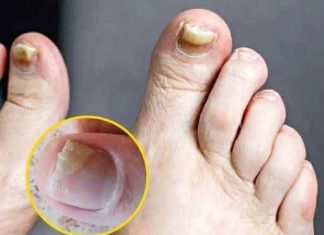Over time, untreated diabetes can lead to nerve damage, circulation issues, and skin changes in the lower legs and feet. Find out more in the article below.
1. Peripheral Neuropathy: Numbness, Tingling & Pain
Peripheral neuropathy is the most common form of nerve damage from diabetes, impacting up to 50–70% of individuals with the condition. High blood sugar damages nerves in the legs and feet over time, leading to:
- Numbness or reduced ability to sense pain and temperature
- Tingling or burning sensations, often described as pins and needles
- Sharp pains or cramps, sometimes worsening at night
- Muscle weakness, affecting walking or grasping

These symptoms may develop gradually, which means many might not notice changes until significant damage occurs.
2. Hair Loss & Circulation Problems
Hair loss on the legs and lower limbs can be a subtle yet important indicator. In diabetes, high blood sugar can impair blood flow to skin and follicles, causing:
- Sparser hair growth or bare patches, especially on legs
- Dry skin, calluses, thickened nails, all signs of compromised circulation
- Hair loss alone isn’t a concern, but when coupled with other symptoms, it should prompt a doctor visit .
3. Foot Ulcers, Infections & Amputation Risk
Reduced sensation makes foot sores and blisters dangerously easy to overlook. Without treatment, these can escalate into:
- Ulcers or slow-to-heal wounds
- Infections, gangrene, and in severe cases, amputation
- Studies suggest up to half of amputations in diabetes patients originate from neuropathy and resulting foot injuries .
4. Balance Issues & Muscle Weakness
Nerve damage impairs sensory inputs and muscle control, which can cause:
- Loss of balance, increasing the risk of falling
- Muscle weakness, especially in legs and feet
- Foot deformities, such as hammertoes or Charcot foot—often a result of prolonged neuropathy
- These issues make daily tasks and movement increasingly challenging.
5. Autonomic Neuropathy: Internal Warning Signs
Beyond the limbs, diabetes can damage autonomic nerves that control:
- Blood pressure, causing dizziness or fainting when standing
- Digestive functions, leading to gastroparesis (nausea, bloating)
- Bladder control, sexual dysfunction, and sweating changes
- These symptoms often go unrecognized but can significantly decrease quality of life.
Why Diabetes Causes These Problems
High blood sugar injures small blood vessels (microvasculature) that supply oxygen and nutrients to nerves—leading to gradual nerve death. Once damaged, nerves cannot regenerate, which is why early detection and treatment matter .
Prevention & Management Strategies
To prevent or slow neuropathy:
- Tight blood sugar control: Keep A1C levels near target. Intensive management can cut nerve damage risk significantly
- Yearly foot exams: Use monofilament and tuning-fork tests to detect early nerve loss
- Protect your feet: Avoid walking barefoot, choose well-fitting shoes, moisturize—but not between toes—and inspect daily
- Treat symptoms early: Medications like gabapentin or pregabalin, and topical therapies can ease pain. Physical and occupational therapy help restore strength and coordination.

When to See a Doctor
Make an appointment if you experience:
- Numbness, burning, or tingling in your feet or legs
- Muscle weakness or sprains
- Persistent sores or infections on feet
- Signs of poor circulation: coldness, hair loss, dry skin
Final Takeaway
Diabetes can silently damage nerves and blood flow—visible through symptoms like hair loss, numbness, pain, and foot ulcers. With disciplined blood sugar control, protective foot care, and prompt medical treatment, you can halt progression and preserve nerve health. Early action not only prevents serious complications but also supports better long-term wellness.

















